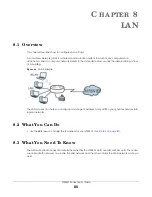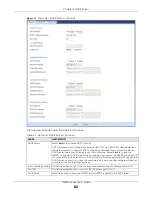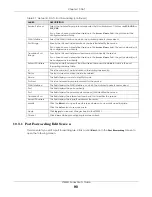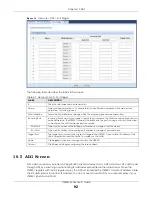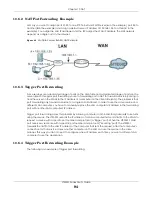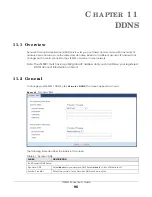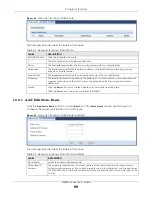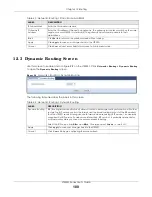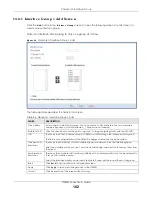
LTE3301 Series User’s Guide
87
C
HA PTER
1 0
NAT
10.1 O ve rvie w
NAT (Network Address Translation - NAT, RFC 1631) is the translation of the IP address of a host in a
packet. For example, the source address of an outgoing packet, used within one network is changed to
a different IP address known within another network.
The figure below is a simple illustration of a NAT network. You want to assign ports 21-25 to one FTP, Telnet
and SMTP server (
A
in the example), port 80 to another (
B
in the example) and assign a default server IP
address of 192.168.1.35 to a third (
C
in the example).
You assign the LAN IP addresses to the devices (
A
to
D
) connected to your LTE3301. The ISP assigns the
WAN IP address. The NAT network appears as a single host on the Internet. All traffic coming from
A
to
D
going out to the Internet use the IP address of the LTE3301, which is 192.168.1.1.
Fig ure 54
NAT Example
Note: You must create a firewall rule in addition to setting up NAT, to allow traffic from the
WAN to be forwarded through the LTE3301.
10.1.1 Wha t Yo u C a n Do
• Use the
G e ne ra l
screen to enable NAT (
Section 10.2 on page 88
).
• Use the
Po rt Fo rwa rding
screen to set a default server and change your LTE3301’s port forwarding
settings to forward incoming service requests to the server(s) on your local network (
Section 10.3 on
page 88
).
• Use the
Po rt Trig g e r
screen to change your LTE3301’s trigger port settings (
Section 10.4 on page 91
).
A: 192.168.1.33
B: 192.168.1.34
C: 192.168.1.35
IP address
192.168.1.1
WAN
LAN
assigned by ISP
FTP, Telnet, SNMP
Port 80
Ports 21 to 25








